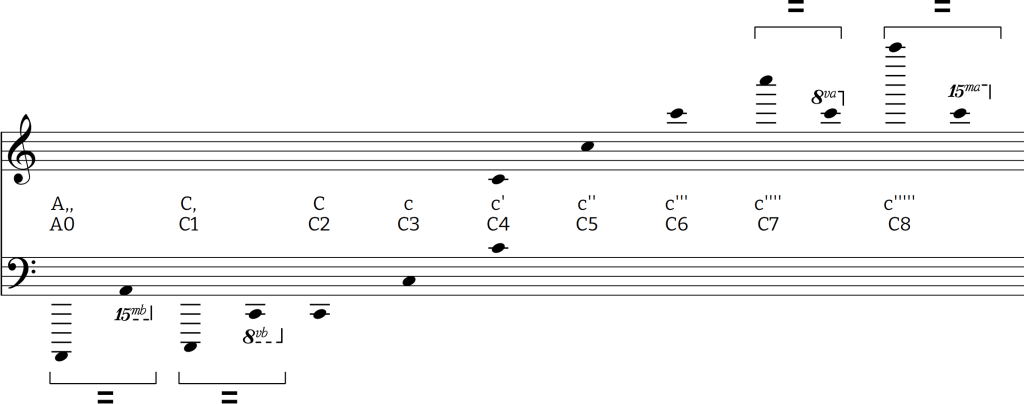Staves

- Usually music is written on a five-line staff.
- More than five lines are used for tabulature (a common form of notation for the guitar or the lute)
- Less than five lines are used for percussion instruments or square notation
- Stems: they change the direction in the middle line of a staff (stems up when a note is placed on the lower lines and stem down when a note is placed in the upper part of the staff (see figure 2)

Clefs
- Treble clef
Used for: high instruments such as violin, flute, oboe, clarinet, trumpet - Alto clef
Used for: middle instruments such as viola, trombone (high), English horn (low) - Tenor clef
Used for: low instruments in their high registers such as violoncello (high), bassoon (high), trombone (high) - Bass clef
Used for: low instruments such as tuba, bassoon, trombone, violoncello as standard clef

Other clefs exist, but they are no longer used as standard clefs, which means they should not be used any longer as they are uncomfortable to read for most musicians (e.g French violin clef, soprano clef, mezzo-soprano clef, baritone clef)
Evolution: The clefs came up together with the introduction of staff lines (G. v. Arezzo, around 1025);
(clef-) symbol means: letter of the note, which is set on the clef’s line (see figure 4)

Octave of a pitch
There are two common terminologies:
a) Using capitals and small letters with additional strokes ( ‘ and , )
b) Refering to the keys of a piano. The lowest C on the piano becomes C1 (the lowest key on the piano is usually A0, the highest C8)
